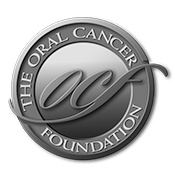Helping patients with dry mouth
Introduction
Xerostomia is defined as dry mouth resulting from reduced or absent saliva flow. Xerostomia is not a disease, but it may be a symptom of various medical conditions, a side effect of a radiation to the head and neck, or a side effect of a wide variety of medications. It may or may not be associated with decreased salivary gland function. Xerostomia is a common complaint found often among older adults, affecting approximately 20 percent of the elderly. However, xerotomia does not appear to be related to age itself as much as to the potential for elderly to be taking medications that cause xerostomia as a side effect.
Normal salivary function is mediated by the muscarinic M3 receptor. Stimulation of this receptor results in increased watery flow of salivary secretions. When the oral mucosal surface is stimulated, afferent nerve signals travel to the salivatory nuclei in the medulla. The medullary signal may also be affected by cortical inputs resulting from stimuli such as taste, smell, anxiety or depression. Efferent nerve signals, mediated by acetylcholine, also stimulate salivary glandular epithelial cells and increase salivary secretions.
Saliva components
Saliva is the viscous, clear, watery fluid secreted from the parotid, submaxillary, sublingual and smaller mucous glands of the mouth. Saliva contains two major types of protein secretions, a serous secretion containing the digestive enzyme ptyalin and a mucous secretion containing the lubricating aid mucin. The pH of saliva falls between 6 and 7.4. Saliva also contains large amounts of potassium and bicarbonate ions, and to a lesser extent sodium and chloride ions. In addition, saliva contains several antimicrobial constituents, including thiocyanate, lysozyme, immunoglobulins, lactoferrin and transferrin.
Functions of saliva
Saliva possesses many important functions including antimicrobial activity, mechanical cleansing action, control of pH, removal of food debris from the oral cavity, lubrication of the oral cavity, remineralization and maintaining the integrity of the oral mucosa.
Complications associated with xerostomia
Xerostomia is often a contributing factor for both minor and serious health problems. It can affect nutrition and dental, as well as psychological, health. Some common problems associated with xerostomia include a constant sore throat, burning sensation, difficulty speaking and swallowing, hoarseness and/or dry nasal passages.1 Xerostomia is an original hidden cause of gum disease and tooth loss in three out of every 10 adults.11 If left untreated, xerostomia decreases the oral pH and significantly increases the development of plaque and dental caries.Oral candidiasis is one of the most common oral infections seen in association with xerostomia.
Signs and symptoms of xerostomia
Individuals with xerostomia often complain of problems with eating, speaking, swallowing and wearing dentures. Dry, crumbly foods, such as cereals and crackers, may be particularly difficult to chew and swallow. Denture wearers may have problems with denture retention, denture sores and the tongue sticking to the palate. Patients with xerostomia often complain of taste disorders (dysgeusia), a painful tongue (glossodynia) and an increased need to drink water, especially at night. Xerostomia can lead to markedly increased dental caries, parotid gland enlargement, inflammation and fissuring of the lips (cheilitis), inflammation or ulcers of the tongue and buccal mucosa, oral candidiasis, salivary gland infection (sialadenitis), halitosis and cracking and fissuring of the oral mucosa.
Diagnosis and evaluation of xerostomia
Diagnosis of xerostomia may be based on evidence obtained from the patient’s history, an examination of the oral cavity and/or sialometry, a simple office procedure that measures the flow rate of saliva. Xerostomia should be considered if the patient complains of dry mouth, particularly at night, or of difficulty eating dry foods such as crackers. When the mouth is examined, a tongue depressor may stick to the buccal mucosa. In women, the “lipstick sign,” where lipstick adheres to the front teeth, may be a useful indicator of xerostomia.
The oral mucosa may be dry and sticky, or it may appear erythematous due to an overgrowth of Candida albicans. The red patches often affect the hard or soft palate and dorsal surface of the tongue. Occasionally, pseudomembranous candidiasis will be present, appearing as removable white plaques on any mucosal surface. There may be little or no pooled saliva in the floor of the mouth, and the tongue may appear dry with decreased numbers of papillae. The saliva may appear stringy, ropy or foamy. Dental caries may be found at the cervical margin or neck of the teeth, the incisal margins or the tips of the teeth.
Several office tests and techniques can be utilized to ascertain the function of salivary glands. In sialometry, or salivary flow measurement, collection devices are placed over the parotid gland or the submandibular/
sublingual gland duct orifices, and saliva is stimulated with citric acid. The normal salivary flow rate for unstimulated saliva from the parotid gland is 0.4 to 1.5 mL/min/gland. The normal flow rate for unstimulated, “resting” whole saliva is 0.3 to 0.5 mL/min; for stimulated saliva, 1 to 2 mL/min. Values less than 0.1 mL/min are typically considered xerostomic, although reduced flow may not always be associated with complaints of dryness.
Sialography is an imaging technique that may be useful in identifying salivary gland stones and masses. It involves the injection of radio-opaque media into the salivary glands. Salivary scintigraphy can be useful in assessing salivary gland function. Technetium-99m sodium pertechnate is intravenously injected to ascertain the rate and density of uptake and the time of excretion in the mouth. Minor salivary gland biopsy is often used in the diagnosis of Sjögren’s syndrome (SS), human immunodeficiency virus-salivary gland disease, sarcoidosis, amyloidosis and graft-vs.-host disease. Biopsy of major salivary glands is an option when malignancy is suspected.
Common causes of xerostomia
Medications
Perhaps the most prevalent cause of xerostomia is medication. Xerogenic drugs can be found in 42 drug categories and 56 subcategories. More than 400 commonly used drugs can cause xerostomia. The main culprits are antihistamines, antidepressants, anticholinergics, anorexiants, antihypertensives, antipsychotics, anti-Parkinson agents, diuretics and sedatives. Other drug classes that commonly cause xerostomia include antiemetics, antianxiety agents, decongestants, analgesics, antidiarrheals, bronchodilators and skeletal muscle relaxants.It should be noted that, while there are many drugs that affect the quantity and/or quality of saliva, these effects are generally not permanent.
Patients complaining of xerostomia should be interviewed and their medications should be reviewed. It may be possible to change medications or dosages to provide increased salivary flow. Symptoms of xerostomia are often worse between meals, at night and in the morning. Therefore, consider modifying drug schedules to achieve maximum plasma levels when the patient is awake.9 Consider easy-to-take formulations, such as liquids, and avoid sublingual dosage forms if possible. Counsel your patients regarding which medications can and cannot be crushed. Also counsel them to first lubricate the mouth and throat with water prior to taking capsules and tablets and to follow this with a full glass of water. If possible, consider switching the patient from one medication to another with comparable efficacy but with less anticholinergic activity, for example, switching from the tricyclic antidepressant amoxapine to desipramine.
Diseases and other conditions
The most common disease causing xerostomia is Sjögren’s syndrome (SS), a chronic inflammatory autoimmune disease that occurs predominantly in postmenopausal women. It is estimated that as many as 3 percent of Americans suffer from Sjögren’s syndrome, with 90 percent of these patients being women with a mean age at diagnosis of 50 years. SS is characterized by lymphocytic infiltration of salivary and lacrimal glands, resulting in xerostomia and xerophthalmia. This combination is called the sicca complex. Enlargement of major salivary glands occurs in about one-third of patients with SS. There is no cure for the disease. The goal of therapy is to manage symptoms. Common symptoms associated with SS, in addition to xerostomia and xerophthalmia, include blurred vision, recurrent eye and mouth infections, dysphagia or difficulty swallowing, oral soreness, smell and taste alternations, fissures on the tongue and lips, fatigue, dry nasal passages and throat, constipation and vaginal dryness.
Sarcoidosis and amyloidosis are other chronic inflammatory diseases that cause xerostomia. In sarcoidosis, noncaseating epithelioid granulomas in salivary glands result in reduced salivary flow. In amyloidosis, amyloid deposits in the salivary glands result in development of xerostomia.
HIV-salivary gland disease occurs in some individuals infected with HIV, mainly in children. This disease results in enlargement of the parotid glands and, occasionally, the submandibular glands, resulting in xerostomia. The T-lymphocyte infiltrate is mainly comprised of CD8+ cells, as compared with SS where CD4+ cells predominate.
Other systemic diseases that can cause xerostomia include rheumatoid arthritis, systemic lupus erythematosus, scleroderma, diabetes mellitus, hypertension, cystic fibrosis, bone marrow transplantation, endocrine disorders, nutritional deficiencies, nephritis, thyroid dysfunction and neurological diseases such as Bell’s palsy and cerebral palsy. Hyposecretory conditions, such as primary biliary cirrhosis, atrophic gastritis and pancreatic insufficiency, may also cause xerostomia. Dehydration resulting from impaired water intake, emesis, diarrhea or polyuria can result in xerostomia. Psychogenic causes, such as depression, anxiety, stress or fear, can also result in xerostomia. Alzheimer’s disease or stroke may alter the ability to perceive oral sensations. Dry mouth is often exacerbated by activities such as hyperventilation, breathing through the mouth, smoking or drinking alcohol. Trauma to the head and neck area can damage the nerves supplying sensation to the mouth, impairing the normal function of the salivary glands.
Cancer therapy
Xerostomia is the most common toxicity associated with standard fractionated radiation therapy to the head and neck. Acute xerostomia from radiation is due to an inflammatory reaction, while late xerostomia, which can occur up to one year after radiation therapy, results from fibrosis of the salivary gland and is usually permanent.16 Radiation causes changes in the serous secretory cells, resulting in a reduction in salivary output and increased viscosity of the saliva. A common early complaint following radiation therapy is thick or sticky saliva. The degree of permanent xerostomia depends on the volume of salivary gland exposed to radiation and the radiation dose. When the total radiation dose exceeds 5,200 cGy, salivary flow is reduced, and little or no saliva is expressible from the salivary ducts. These changes are typically permanent.
Certain cancer chemotherapeutic drugs can also change the composition and flow of saliva, resulting in xerostomia, but these changes are usually temporary. Xerostomia may also occur during graft-vs.-host disease. When donor lymphocytes proliferate and infiltrate the recipient’s salivary glands and other tissues, changes can occur in a clinical pattern resembling those seen in Sjögren’s syndrome.
Patients experiencing xerostomia from radiation therapy or cancer chemotherapy are at particular risk of infections from normal oral flora. Oral ulcerations can become the nidus of invasive gram-positive and gram-negative infections, and opportunistic infections with fungal organisms such as Candida can occur.
Practice scenario/case study
A 54-year-old woman complaining of a two-month history of fatigue and general trouble sleeping at night, stating that she wakes up often with a dry mouth and throat. She also states her eyes have been dry, tired and red lately, but she attributes this to her poor sleep patterns. She states she is currently consuming up to seven pints a day of liquids (coffee, tea, water, juice, milk, soda, etc.), and she is very distressed by her severe dry mouth. She wakes several times during the night and averages only four hours sleep. She drinks minimal alcohol and smokes approximately 15 cigarettes per day. She has no other complaints, and her past medical history is significant only for a history of allergic rhinitis for which she takes OTC antihistamines and decongestants.
The following are some examples of questions you might ask.
- Do you need to moisten your mouth frequently or sip liquids often?
- Does your mouth feel dry at mealtime?
- Do you have less saliva than you used to?
- Do you have trouble swallowing?
- Is it difficult to eat dry foods such as crackers or toast?
- Do you suffer from any chronic illness, such as diabetes or hypertension?
- When was the last time you had a complete physical examination by your doctor?
- What prescription and OTC medications are you currently taking?
- What dietary supplements are you currently taking?
- How often do you brush your teeth?
- Do you wear dentures? If so, how often do you clean your dentures?
- When was the last time you saw your dentist for a regular checkup?
- Do you have toothaches or other dental pain?
- Have you noticed any sores in your mouth or on your lips?
- How much water do you drink throughout the day?
Management of xerostomia
Ideally, the management of xerostomia will include the identification of the underlying cause. In the event that steps can be taken to minimize the effect of the underlying cause, this should be done. For many patients, however, little can be done to alter the underlying cause. For those whose xerostomia is related to medication use, effective symptomatic treatment may be important to maintain compliance with their medication regime. Symptomatic treatment typically includes four areas: increasing existing saliva flow, replacing lost secretions, control of dental caries and specific measures such as treatment of infections.
Self-care
Patients suffering from xerostomia should be encouraged to take an active role in management of their xerostomia with regard to both identifying products and practices that are most useful to them and in being vigilant to minimize the risks to dental health. Patients should be encouraged to conduct a daily mouth examination, checking for red, white or dark patches, ulcers or tooth decay. If anything unusual is found, it should be reported to their physician or dentist. Patients should be encouraged to practice regular preventive dentistry. Plaque removal and treatment of gingival infections or inflammation and dental caries are essential. Patients should also be counseled to brush and floss regularly and to use fluoride daily. The teeth should be cleansed at least twice daily using a soft bristled toothbrush and mildly flavored low-abrasive fluoride toothpaste.
Products containing sodium lauryl sulfate should be avoided as they may contribute to the formation of aphthous ulcers or canker sores. Sodium fluoride rinses should be held in the mouth for at least one minute before expectorating, while fluoride gels can be applied with a toothbrush and left in place for two to three minutes before expectorating. No food or beverage should be consumed for at least 30 minutes after fluoride application. Chlorhexidine rinses also may be useful in preventing caries by reducing lactobacillus counts in the mouth.
Dentures should not be worn during sleep and should be kept clean by overnight soaking. Acrylic appliances should be soaked in a sodium hypochlorite solution, and metal dentures should be soaked in chlorhexidine. Patient may want to consider visiting their dentist more frequently and should take advantage of the opportunity to discuss their xerostomia with their dental hygienist.
Because of their susceptibility to dental caries, patients with xerostomia should avoid sugary or acidic foods or beverages. These patients should also avoid irritating foods that are dry, spicy, astringent or excessively hot or cold. If possible, tobacco and alcohol intake should be eliminated to control dental caries. Lubricants such as Orajel® or Vaseline® and glycerin swabs on the lips and under dentures may relieve drying, cracking, soreness, and mucosal trauma. A cold air humidifier may aid mouth breathers who typically have their worst symptoms at night.
Saliva stimulants or sialagogues, such as sugarless candies and chewing gum, may be used to stimulate saliva flow when functional salivary glands remain. Patients should be advised to take frequent sips of water throughout the day and to suck on ice chips. Eating foods such as carrots or celery may also help patients with residual salivary gland function. Addition of flavor enhancers such as herbs, condiments and fruit extracts may make food more palatable to patients complaining of their food tasting bland, papery, salty or otherwise unpleasant. Listed below are several additional self-care steps that patients can take to minimize the effects of their xerostomia.
Over-the-counter products
There are several over-the-counter products that are available to provide assistance in the management of xerostomia. These products range from saliva substitutes and stimulants to products designed to minimize dental problems.
Saliva substitutes:
Artificial saliva or saliva substitutes can be used to replace moisture and lubricate the mouth. These substitutes are available commercially, but they can also be compounded. Artificial salivas are formulated to mimic natural saliva, but they do not stimulate salivary gland production. Therefore, they must be considered as replacement therapy rather than a cure.
Commercially available products come in a variety of formulations including solutions, sprays, gels and lozenges. In general, they contain an agent to increase viscosity, such as carboxymethylcellulose or hydroxyethylcellulose, minerals such as calcium and phosphate ions and fluoride, preservatives such as methyl- or propylparaben, and flavoring and related agents.
Some commercially available saliva substitutes include:
• Carboxymethyl, or hydroxyethylcellulose solutions:
• Entertainer’s Secret® (KLI Corp) , spray
• Glandosane® (Kenwood/Bradley) spray
• Moi-Stir® (Kingswood Labs) spray
• Moi-Stir® Oral Swabsticks (Kingswood Labs) swabs
• Optimoist® (Colgate-Palmolive) spray
• Saliva Substitute® (Roxane Labs) liquid
• Salivart® (Gebauer) preservative-free aerosol
• Salix® (Scandinavian Natural Health & Beauty) tablets
• V. A. Oralube® (Oral Dis. Res. Lab) sodium-free; liquid
• Xero-Lube® Artificial Saliva (Scherer) sodium-free; spray
• Mucopolysaccharide Solutions:
• MouthKote® (Parnell) , spray
Saliva stimulants:
Natrol Dry Mouth Relief, which has recently been developed, utilizes a patented pharmaceutical grade of anhydrous crystalline maltose (ACM) to stimulate saliva production. As its effect is to stimulate functional salivary glands, it would not be appropriate for patients whose salivary gland function has been lost through radiological treatment. However, in a clinical study of patients with Sjorgren’s Syndrome, ACM was shown to increase secretions and significantly improve patient’s subjective assessment of symptoms.34 Natrol Dry Mouth Relief is formulated as lozenges which are to be dissolve in the mouth three times daily.
Prescription Products
Pilocarpine: Pilocarpine is a cholinergic parasympathomimetic agent with predominantly muscarinic M3 action that causes stimulation of residual-functioning exocrine glands. The tablets are indicated for the treatment of symptoms of dry mouth from salivary gland hypofunction caused by Sjögren’s syndrome or by radiotherapy for cancer of the head and neck. The time to reach peak concentrations following oral administration is approximately 1.25 hours. The duration of sialogogic effect is about two to three hours. In clinical studies, pilocarpine at dosages of 5 mg to 30 mg, divided into one to four oral daily doses, was shown to significantly decrease dryness of the mouth and eyes when compared to artificial saliva or placebo in patients with Sjögren’s syndrome and those who developed xerostomia following radiation therapy.
Pilocarpine is contraindicated in patients with uncontrolled asthma, narrow-angle glaucoma or iritis. It is pregnancy category C. The most common side effects are increased sweating and gastrointestinal intolerance. Hypotension, rhinitis, diarrhea and visual disturbances can also occur. The recommended initial dose is one 5 mg tablet taken TID or QID; the usual dosage range is up to three to six tablets (15 to 30 mg) per day, not to exceed two tablets (10 mg) per dose. At least six to 12 weeks of uninterrupted therapy may be necessary before improvement in symptoms is seen. Pilocarpine is available in an ophthalmic solution and gel and also as an oral tablet (Salagen®). The tablet can also be compounded into an oral solution of varying concentrations. The 2001 AWP for 30 days of treatment with Salagen® 5 mg QID is $152.64.
Cevimeline: Cevimeline is a cholinergic agonist with a high affinity for the muscarinic M3 receptors located on lacrimal and salivary gland epithelium, leading to an increase in exocrine gland secretions including saliva and sweat.It is indicated for the treatment of symptoms of dry mouth in patient’s with Sjögren’s syndrome. It is rapidly absorbed from the gastrointestinal tract, reaching peak concentrations in approximately 90 minutes without food. Its duration of sialogogic effect is unclear. Clinical trials have shown it to be more effective than placebo in relieving symptoms of dry mouth. No clinical trials are available comparing it to pilocarpine.
It is contraindicated in patients with uncontrolled asthma, narrow-angle glaucoma, or iritis. It is pregnancy category C. Excessive sweating and nausea are the most frequently reported adverse effects with cevimeline. Rhinitis, diarrhea and visual disturbances, especially at night, can also occur.The recommended oral dosage is 30 mg TID. The 2001 AWP for 30 days of treatment is $118.
Other medications and preparations: Anethole trithione is a bile secretion-stimulating drug, or cholagogue. It stimulates the parasympathetic nervous system and increases the secretion of acetylcholine, resulting in the stimulation of salivation from serous acinic cells. Anethole trithione has been used for many years in the treatment of chronic xerostomia, but reports differ regarding its efficacy. While some studies report improvements in salivary flow rates in drug-induced xerostomia, trials in patients with Sjögren’s syndrome show conflicting results. Side effects reported include abdominal discomfort and flatulence. Dosages of 75 mg three times daily may be effective in treating patients with mild-to-moderate symptoms of xerostomia, but further research is needed to establish its safety and efficacy in this setting.
Yohimbine is an alpha-2 adrenergic antagonist which indirectly results in an increase of cholinergic activity peripherally. In one small, randomized, double-blind, crossover study, the effect of yohimbine was compared to that of anethole trithione in 10 patients treated with psychotropic medications. Patients given yohimbine 6 mg three times daily for five days showed significantly increased saliva flow (p<0.01) when compared with anethole trithione 25 mg TID.
Human interferon alfa (IFN-a) is currently undergoing clinical trials to determine the safety and efficacy of low-dose lozenges in the treatment of salivary gland dysfunction and xerostomia in patients with Sjögren’s syndrome. In one study, IFN-a lozenges at dosages of 150 IU given TID for 12 weeks resulted in a significant increase in stimulated whole saliva (p=0.04) when compared with placebo.
Development of saliva substitutes based on novel thickening agents in hopes of providing longer retention on the mucosal surface is another area of current research. Substitutes based on linseed polysaccharide (Salinum®,
Miwana AB, Gallivare, Sweden or xanthan gum polysaccharide (Xialine®,Lommerse Pharma BV, Oss, the Netherlands) have been shown to be effective in patients with Sjögren’s syndrome.
Another area of research includes the production of antimicrobial peptides originally derived by histatins, antifungal proteins naturally occurring in serous salivary glands.Prednisolone irrigation of parotid glands is being investigated as a potential treatment of xerostomia in patients with Sjögren’s syndrome. Slow-release delivery systems for pilocarpine are also being investigated.12 Vaccination with autoreactive T cells or with T cell receptor peptides is another area of research, as is the possibility of inserting water transporting proteins or aquaporins, in the cell membrane of the ductal cells.
Practice scenario/case study
Now let’s return to our previous case: A 54-year-old woman complaining of a two-month history of fatigue and general trouble sleeping at night, stating that she wakes up often with a dry mouth and throat. After discussing her problem with you earlier, she made an appointment with her physician and has subsequently been diagnosed with Sjögren’s syndrome. She now returns to discuss management options for her xerostomia.
What specific treatment options and counseling tips should you offer her at this time?
- For her allergic rhinitis, suggest nonsedating antihistamines and avoidance of products containing decongestants.
- Go over the self-care measures covered earlier in this discussion (with emphasis on minimizing caffeine consumption and smoking).
- Give advice about good oral hygiene.
- Encourage adequate fluid intake, avoiding caffeine and sugar-containing products and alcohol.
- Encourage her to quit smoking.
- Consider the use of an artificial saliva and/or OTC saliva stimulant.
SUMMARY/CONCLUSIONS
Xerostomia is a common problem and if not recognized and treated, can have a significant effect on a patient’s quality of life. Through proper education, assessment, prevention, referral and appropriate treatment, patients with dentists help, can minimize xerostomia and its effect on dental health and quality of life.
By Cathy L. Bartels, Pharm.D., assistant professor, pharmacy practice, School of Pharmacy and Allied Health Sciences, University of Montana




